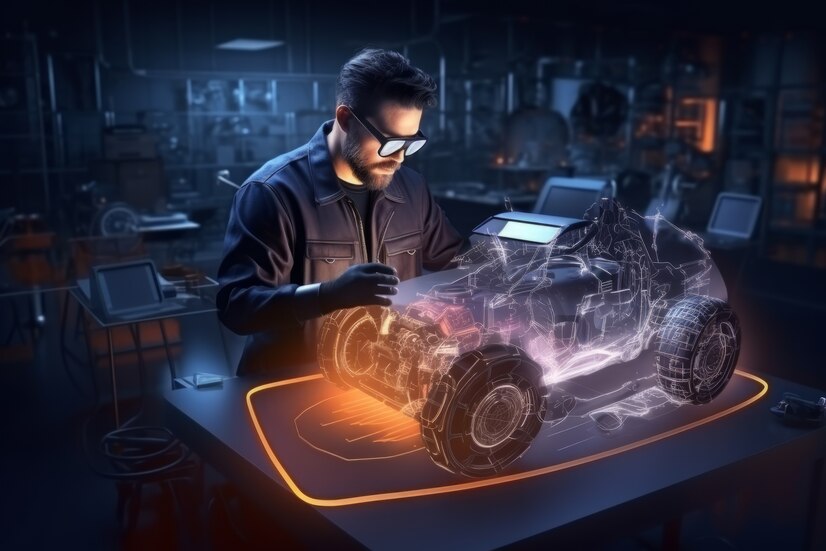General
How to Choose the Right Dishwasher

The modern kitchen is completely different from the kitchen 20 years ago. The evolution of technological progress leads to the fact that the same actions used to take way longer than now.
The slogan of progress is “better, more, faster”. If earlier a woman spent most of the day in the kitchen or doing household chores, then a modern woman can devote just about an hour or two to the same things.
A washing machine, an oven, an electric kettle, a microwave, a refrigerator, a blender – can we now imagine existence without these useful devices?
For the right choice of a dishwasher, we need to decide on the first question, why do we need it and whether it is needed at all. According to that chart, there are several reasons that motivate you to buy it:
- saving personal time;
- dishes can be done at any time, even when you are away from home;
- no hot water required;
- significant savings – water consumption with a dishwasher is reduced by 3, 5 or even more times, compared to washing dishes with hands;
- the ability to use potent detergents that are not applicable when the dishes are washed by hand;
- rinsing is carried out at a high temperature, which allows you to completely clean the surface of the dishes from detergents.
At the same time, it is worth mentioning the disadvantages, which may be important for you:
- The price of a dishwasher. Each owner of the device will confirm that the purchase is worth it, but it’s up to you.
- It takes up space. You need to think in advance about where to place another, not the smallest unit, and also with free access for loading/unloading dishes.
- Power consumption of a dishwasher. This device is one of the most powerful among household appliances. The apartment or house must have reliable wiring. Typically, the machine has sensors that determine the number of dishes and even pollution. The device independently determines the need for water and energy. When connected to an external source of hot water, it is possible to significantly save electricity.
- Dishes from some materials can’t be washed in it. These include metal (tin, aluminum, copper), heat-resistant dishes made of plastic, and wood.
- Detergents for the dishwasher. Now you need to use chemicals for washing dishes.
Consider the size of the dishwasher
The right choice of the dishwasher can be determined first of all by size.
The standard size of the dishwasher holds from 10 to 13 sets of dishes. It is suitable for a family of 4-5 people. Such devices usually have several modes and functions.
The narrow dishwashers are designed to hold slightly less than 8-10 sets. Typically, devices save 10-15% of the budget. Many of these devices are offered by European manufacturers, such as Siemens, Bosch, Electrolux, and others;
There are also compact dishwashers that hold up to 8 sets of dishes. They are suitable for small families, as well as for small kitchens. Installed in a wall cabinet or on a table. However, before choosing a dishwasher of this type, you should know that it is endowed with the most minimal functionality, but it also is the most budgetary option. Suitable for families of up to 3 people. You can’t wash the pans and pots in such a device though.
Types of dishwashers
There are two types:
- built-in;
- freestanding.
Which dishwasher to choose from these two? It all depends on the capabilities of the kitchen space and your preferences regarding interior design. In any case, we recommend that you familiarize yourself with both models. Embedded or built-in dishwashers are divided into fully and partially built-in, they differ in the location of the control panel.
An economical or powerful dishwasher?
The difficulty of the question is which dishwasher is better in choosing the type of power of the device. Manufacturers offer us as many as seven energy classes, which are usually represented by Latin letters from A to G. Class A is the most economical, and G represents the most powerful and energy-consuming devices. Usually, D – G dishwashers are old models or professional devices.
For reference, here are energy consumption standards by classes:
- “A” – 0.8-1.05 kWh / cycle;
- “B” – 1.06-1.09 kWh / cycle;
- “C” – 2-2.99 kWh / cycle.
Dishwasher functionality
Another important and most interesting question is the functionality of the device.
Standard features:
- prewash;
- washing with hot water and detergents;
- rinse with detergent;
- drying dishes with hot air.
More expensive models are equipped with several additional modes, which significantly increase the dishwasher capabilities:
- intensive high-temperature washing up to 167 °F;
- mode for washing fragile dishes 86-104 °F;
- quick wash: rinse dishes immediately after eating not greasy liquid food.
Typical water consumption is about 3.6-4.4 gallons of water per 1 wash cycle.
Also, some models may be equipped with such functions:
- filtration and self-cleaning system;
- waste grinder;
- child protection;
- delayed start;
- regulation of the height of the upper basket;
- Aqua Stop;
- partial load mode.
The dishwasher is connected to the water supply and to the sewage with special hoses. It is better than the distance to the sewage system does not exceed 5 ft.
Which dishwasher is better: built-in or free-standing
The built-in dishwasher disguises itself perfectly in furniture including a navigation panel so that the kitchen will amaze guests with its elegance and style.
What to consider when choosing a dishwasher in the store
When making a purchase, make sure that your choice is fully equipped.
The standard set of the built-in dishwasher includes:
- dispenser;
- front door;
- bottom basket;
- top basket;
- air duct of the drying system;
- lower sprayer;
- top sprayer;
- cutlery basket;
- discharge pump;
- filter.
After that, make sure that the device suits you according to its functionality:
- the height of the baskets is adjustable, it will be useful for washing large dishes;
- the ability to change the slope;
- the presence of internal camera lighting;
- the possibility of fixing the door;
- heat exchanger;
- additional removable spray nozzles;
- the presence of a self-cleaning filter (significantly saves water);
- stainless steel elements;
- the presence of screw supports (if you have an uneven floor).
Dishwasher Care
A few little tips that will extend the life of the machine: clean the filter from time to time, sometimes wash baskets for dishes, use additional care products, and wipe the device.

General
Are Electric Cars or Gasoline Cars Cheaper?

In the evolving landscape of personal transportation, a key question many consumers face is whether to invest in an electric vehicle (EV) or stick with a traditional gasoline-powered car. This decision is not just about environmental impact but also involves a complex analysis of costs.
Initial Purchase Price and Incentives
When you find a new Ford for sale, it is important to remember that the upfront cost of electric cars can be higher than their gasoline counterparts, primarily due to the advanced technology and the cost of the batteries. However, this gap is narrowing as battery technology improves and production scales up. Additionally, many governments offer incentives for purchasing electric vehicles, such as tax rebates, grants, and other financial benefits, which can significantly reduce the net purchase price. It’s important to research and factor in these incentives when comparing the initial costs of EVs and gasoline vehicles.
Fuel Costs and Efficiency
One of the most significant ongoing costs of any vehicle is fuel. Electric cars offer substantial savings in this area, as the cost of electricity required to charge an EV is generally much lower than the cost of gasoline per mile. Electricity prices can vary depending on your location and the time of day when you charge your car, but on average, EVs are cheaper to “fuel” compared to traditional cars. Additionally, electric vehicles are more efficient in converting energy into power, further enhancing their cost-effectiveness regarding fuel usage.
Maintenance and Repair Expenses
Electric vehicles have fewer moving parts than gasoline vehicles, which typically results in lower maintenance and repair costs. EVs do not require oil changes, fuel filter replacements, or spark plug replacements, and they experience less wear and tear on brakes due to regenerative braking systems. However, when repairs are needed, particularly related to the battery or the electric drivetrain, they can be more expensive. The battery’s lifespan and potential replacement costs should also be considered, although many manufacturers offer extensive warranties on electric car batteries.
Depreciation and Resale Value
Depreciation is a significant factor in the overall cost of vehicle ownership. Initially, electric cars depreciated faster than gasoline cars, primarily due to the rapid pace of improvements in EV technology and concerns about battery life. However, as public acceptance increases and technology stabilizes, the depreciation rate of electric vehicles is improving. The resale value of EVs is expected to strengthen over time, especially as demand increases and more consumers look to transition from gasoline to electric vehicles.
Total Cost of Ownership Analysis
When considering the total cost of ownership, it’s crucial to factor in all expenses, including purchase price, fuel, maintenance, insurance, and depreciation. Over the lifetime of the vehicle, electric cars often become more cost-effective despite their higher initial purchase price. Various online calculators can help you compute the total cost of ownership for specific models of electric and gasoline cars, providing a clearer picture based on your personal or geographic factors.
Make the Best Choice for You
Deciding whether electric or gasoline cars are cheaper involves a comprehensive analysis of multiple factors. While electric vehicles may have a higher initial cost, their lower operating costs and potential government incentives often make them a more economical choice in the long run. As technology progresses and the adoption of electric vehicles grows, the economic benefits of EVs are likely to become even more pronounced, making them an increasingly wise investment for cost-conscious consumers.
General
The Impact of Aerodynamics on Your Car’s Performance

Aerodynamics plays a significant role in the design and performance of modern vehicles, influencing everything from fuel efficiency to high-speed stability. Understanding how aerodynamics affect your car’s performance can provide valuable insights into why certain design decisions are made by automakers and how they impact the everyday driving experience.
What is Aerodynamics?
Aerodynamics refers to the way air moves around objects. For cars, aerodynamics is about managing the airflow around the vehicle to minimize resistance or drag and maximize efficiency and performance. The basic principle behind automotive aerodynamics is simple: the smoother the air flows over the body of the car, the less energy the car will use to move forward and the more stable it will be at higher speeds.
Fuel Efficiency
One of the most significant impacts of improved aerodynamics is better fuel efficiency. By reducing drag, a vehicle can move more efficiently, requiring less power and thus using less fuel. Cars with better aerodynamics tend to have a sleek design, with features like covered underbodies and streamlined shapes, which you may see in higher-end cars, like a new BMW for sale. These design elements help to reduce air resistance and turbulence, enabling the vehicle to slice through the air more easily.
High-Speed Stability
Aerodynamics also plays an important role in a car’s stability at high speeds. Cars designed with aerodynamic efficiency in mind usually feature spoilers and diffusers that manage airflow to reduce lift and increase downforce. This higher downforce helps keep the vehicle firmly planted on the road, providing better traction and handling during high-speed maneuvers. This is why sports cars often have pronounced aerodynamic features like large rear wings and low, wide stances.
Handling and Performance
The handling and overall performance of a car are also influenced by its aerodynamic design. Aerodynamic cars tend to have less body roll and better grip, especially in windy conditions or when making sharp turns. This is because of the reduction of crosswind impact and the overall balance of airflow at all angles around the vehicle. Consequently, drivers of aerodynamically efficient cars can enjoy a smoother and more controlled driving experience.
Noise Reduction
Another less obvious benefit of good aerodynamics is noise reduction. Cars with better aerodynamics generate less wind noise, which is the noise created by air moving around and inside the vehicle. This noise reduction makes for a quieter ride and can lessen driver fatigue on long trips and improve the overall comfort level inside the cabin.
Innovations in Aerodynamic Design
Automotive engineers continually innovate to improve vehicle aerodynamics. Recent advancements include active aerodynamics, where parts of the car adjust dynamically to suit different driving conditions. For instance, some sports cars feature adaptive rear wings that can alter their angle to optimize downforce or reduce drag as needed. Electric vehicles, which benefit significantly from reduced drag due to their need for efficient energy use, often feature particularly smooth and streamlined designs.
The Overall Impact of Aerodynamics
The impact of aerodynamics on car performance extends beyond making a vehicle faster or more fuel-efficient. It affects safety, comfort and environmental responsibility, making it an important component of modern automotive design.
General
Exploring the Wonders of MyFavouritePlaces.org// blog: A Blogger’s Dream

Introducing MyFavouritePlaces.org
Creating and sharing your travelogues has never been easier than with MyFavouritePlaces.org, an all-inclusive platform for travel blogging. You may enrich your travel blogging trip with the plethora of tools offered by this platform, from making visually beautiful blogs to participating with a community of fellow travellers. Now we’ll explore the reasons why MyFavouritePlaces.org is so popular among travel bloggers.
Discovering the Features
User-Friendly Interface
The clean, simple design of the interface is one of the most noticeable aspects of MyFavouritePlaces.org. You won’t have any trouble finding your way about the site, regardless of your level of blogging experience. The interface is well-organized and minimalist, so you can put your focus where it belongs: on making captivating content and sharing your trip tales.
Personalized Travel Recommendations
There’s more to MyFavouritePlaces.org than meets the eye. Based on your interests and past posts, it suggests tailored vacation spots. Your vacation planning will be more effective and personalized with this function since it keeps you informed about interesting new places that fit your preferences.
Interactive Travel Maps
Envision a map that highlights your past and future travel destinations. You can incorporate the interactive trip maps provided by MyFavouritePlaces.org into your blog articles. Maps like this not only make your writing more visually appealing, but they also make it easier for readers to follow your journey geographically.
Community Engagement
The core of MyFavouritePlaces.org is the community. The platform’s comment section, forum, and social network integration make it easy for bloggers and readers to engage with each other. Your blog’s exposure and trustworthiness will both increase as a result of your community engagement efforts.
Creating Your Travel Blog
Easy Blog Setup
The MyFavouritePlaces.org blog platform makes blog creation a snap. Following the detailed instructions will have your blog live in no time. You may tell compelling travel stories and connect with your audience without worrying about the technical parts because the platform takes care of them.
Customizable Themes
The aesthetics of your blog serve as an important first impression. Many alternative themes are available for customization on MyFavouritePlaces.org. You may pick a theme that represents you and your brand, whether that’s a clean, simple style or a bold, eye-catching layout.
SEO Tools for Bloggers
The success of a blog hinges on its visibility. Search engine optimization (SEO) tools are already installed on MyFavouritePlaces.org, so you can easily make your material search engine friendly. Using these tools, which include keyword suggestions and meta descriptions, you may boost your blog’s search engine rankings and attract more visitors.
Social Media Integration
To promote your blog in this digital era, social media is a potent instrument. Sharing your posts on MyFavouritePlaces.org is a breeze thanks to the site’s tight integration with all the main social media sites. You can engage more people across more platforms with this tool, which expands your audience reach.
Exploring Destinations
In-Depth Destination Guides
Here at MyFavouritePlaces.org, we have extensive destination guides that cover a wide range of sites all around the globe. The wealth of information included in these guides—on local culture, must-see destinations, travel advice, and more—makes them a must-have for bloggers and readers alike.
User-Generated Content
Content created by users is the platform’s bread and butter. Being a blogger allows you to both help other people and gain knowledge from the experiences of others through the sharing of guides, reviews, and recommendations. This pool of information enhances the site’s content and gives users a variety of viewpoints on various travel places.
Virtual Tours and Experiences
Virtual tours and experiences are available on MyFavouritePlaces.org for individuals who are unable to travel but yet wish to see the world. You may virtually visit different places and experience a little bit of what they have to offer with these engaging features. It’s a fantastic method for collecting material and ideas for future adventures.
Top Destinations Highlight
On a monthly basis, MyFavouritePlaces.org features curated lists of the best vacation spots. These highlights provide you new options for your next vacation by showcasing popular and lesser-known destinations. There is something on these lists for everyone, whether they are seeking well-known tourist spots or more obscure adventures.
Building Your Audience
Networking with Other Travelers
When it comes to blogging, networking is key. Through its forums, group projects, and gatherings, MyFavouritePlaces.org makes it easy for travel enthusiasts to interact with one another. Connecting with people who share your values can open doors to new experiences and help you both develop personally and professionally.
Monetization Opportunities
The ability to monetize your blog is a huge plus. Advertisements, sponsored posts, and affiliate marketing are just a few of the ways that MyFavouritePlaces.org can make money. With these chances, you may make money doing what you love while also providing your audience with great content.
Analytics and Growth Tracking
If you want your blog to grow, you must understand how it is performing. You may monitor the demographics, interaction, and traffic to your blog with the help of MyFavouritePlaces.org’s comprehensive analytics. Your strategy, content, and reach may all be fine-tuned with the help of these insights.
Conclusion
Why Choose MyFavouritePlaces.org?
A user-centric and adaptable platform for travel bloggers, MyFavouritePlaces.org stands out in a congested digital world. If you want to tell the world about your travels, this is the app for you because of its powerful features, user-friendliness, and community support. No matter how much or how little experience you have with blogging, you will find what you need at MyFavouritePlaces.org.
Final Thoughts
Inspiring people, sharing knowledge, and creating a community are the true goals of travel blogging, which goes beyond simply documenting your experiences. MyFavouritePlaces.org improves upon it by offering a full-featured platform for all your blogging requirements. The process is made easier and your influence is maximized, whether you’re writing compelling material or connecting with fellow travelers.
-

 Health2 weeks ago
Health2 weeks agoHealthcare management consulting: Navigating the complexities of an evolving sector
-

 Home Improvement2 weeks ago
Home Improvement2 weeks agoHow to Maintain Your Residential Heating System for Optimal Performance
-

 Home Improvement2 weeks ago
Home Improvement2 weeks agoMaximizing Home Comfort and Efficiency with Innovative Floor Vent Designs
-

 Home Improvement1 week ago
Home Improvement1 week agoEnhancing Home Comfort with Residential Screen Doors: Benefits and Selection Tips
-

 Health1 week ago
Health1 week ago6 Ways Cupping Therapy is Enhancing Wellness in Geneva
-

 General1 day ago
General1 day agoAre Electric Cars or Gasoline Cars Cheaper?